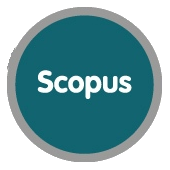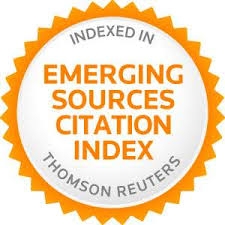Enfoques modélicos y estrategias en la evaluación de centros educativos
Resumen
Palabras clave
Referencias
Bartolomé, M. y otros (1991). Análisis de los modelos institucionales de evaluación de centros de Cataluña, Revista de Investigación Educativa, 9, 17, 103-118.
Bidwell, C. E. y Kasarda, J. D. (1980). Conceptualizing and measuring the effects of school and schooling, American Journal of Education, (88), 401-430. http://dx.doi.org/10.1086/443540
Blanco, L. (1993). Autoevaluación modular de centros educativos. Barelona: PPU.
Bollen, R. y Hopkins, D. (1987). School Based Review: Toward a Praxis, ACCO, Leuven, Bélgica.
Borrell, N. (1995). Modelos para la evaluación externa e interna de los centros docentes, en Medina, A. y Villar, L.M. (Eds), Evaluación de programas educativos, centros y profesores, Madrid: Editorial Universitas, S.A., pp. 211-233.
Cardona, J. (1995). Un instrumento para evaluar los centros escolares de educación se-cundaria, en Medina, A. y Villar, L. M. (Coord.), Evaluación de Programas Educativos, Centros y Profesores,Madrid: Editorial Universitas, S.A., pp. 275-302.
Castejón, J. L. y otros (1993). Investigación sobre la eficacia de centros de enseñanza secundaria. Un modelo de identifi-cación y funcionamiento, Revista de Educación, (301), 221-244.
CEDODEP (1966). Técnicas de valoración de personal docente. Organización y supervisión de escuelas, Madrid: CEDODEP.
Centra, J. y Potter, D. (1980). School and teacher effects: an interrelational model, Review of Educational Research, (80), 273-291. http://dx.doi.org/10.3102/00346543050002273
Clark, D. y otros (1984). Effective schools and school improvement: A comparative analysis two lines inquiry, Educational Ad-ministration Quaterly, 20 (3), 41-68.
http://dx.doi.org/10.1177/0013161X84020003004
Coleman, J. y otros (1966). Equality of educational opportunity, U.S. Department of H.E.W., Office of Education, Washington, D.C.
Creemers, B. P. y Scheerens, J. (Eds.), 1989). Developments in school effectiveness research, Número especial del International Journal of Educational Research, (13), 7.
Chrispells, J. A. (1990). Achieving and sustaining school effectiveness: A five year study of change in elementary schools. Co-municación presentada en Annual Meeting of the American Educational Research Association, Boston.
De La Orden, A. (1993). La escuela en la perspectiva del producto educativo. Reflexiones sobre evaluación de centros docentes, Bordón, 45 (3), 263-270.
De Miguel, M. (1989). Modelos de investigación sobre organizaciones educativas, Revista de Investigación Educativa, 7 (13), 21-56.
De Miguel, M. y otros (1994). Evaluación para la calidad de los institutos de educación secundaria, Madrid: Escuela Española.
Delaware (1984). School Improvement Review Process, Department of Public Instruction, Delaware.
Dunkin, M. J. (1978). Student characteristics, classroom process and student achievement, Journal of Educational Psychology, 70 (6), 998-1009.
http://dx.doi.org/10.1037/h0078163
ECIS (1987). Evaluation and Acreditation. Londres: European Council of International Schools.
Erickson, F. (1987). Conceptions of school culture: An overview. Educational Administration Quaterly, 23, (4). http://dx.doi.org/10.1177/0013161x87023004003
Escudero, T. (1980). ¿Se pueden evaluar los centros educativos y sus profesores?. Educación Abierta, 10, ICE-Universidad de Zaragoza.
Escudero, T. (1993). Enfoques modélicos en la evaluación de la enseñanza universitaria. Actas de las III Jornadas Nacionales de Didáctica Universitaria "Evaluación y Desarrollo Profesional", Servicio de Publicaciones de la Universidad de Las Palmas de Gran Canaria, pp. 5-59.
Esteban, S. y Bueno, J. (1988). Claves para transformar y evaluar los centros. Madrid: Popular.
Frazier, C. (1986). Indicators of Quality Schools: Instruments to Access your School's Quality. Department of Education, Denver, Colorado.
Fuentes, A. (1988). Procesos funcionales y eficacia de la escuela. Un modelo causal. Madrid: Universidad Complutense.
G.E.T.E.D. (1990). Guide pour l'Auto-évaluation de l'Etablissment Scolaire. C.R.D.P., Lyon.
G.E.T.E.D. (1992). L'Auto-Evaluation de l'Etablissment Scolaire. Les dossiers thematiques,(7), M.A.F.P.E.N., Lyon.
GAIRÍN, J. (1993). La autoevaluación institucional como vía para mejorar los centros educativos, Bordón, 45, 3, 331-350.
Gallegos, A. (1994). Meta-evaluation of school evaluation models. Studies in Educational Evaluation, 20 (1), 41-54. http://dx.doi.org/10.1016/S0191-491X(00)80004-8
García Hoz, V. (1975). Una pauta para la evaluación de centros educativos, Revista Española de Pedagogía, (130), 117-150.
García Ramos, J. M. (1989). Extensión de la evaluación. En R. Pérez Juste y J.M. García Ramos, Diagnóstico, evaluación y toma de decisiones.Madrid: Rialp, pp. 315-385.
Goodman, P. y Pennings, J. (Eds.) (1977). New perspectives on organizational effectiveness. San Francisco: Jossey-Bass.
Grids (1988). Secondary School Handbook. Londres: S.C.D.C. Publications.
Guba, E. G. y Lincoln, Y. S. (1981). Effective evaluation. San Francisco: Jossey-Bass.
Hernichsfeger, A. y Wiley, D. C. (1978). Conceptual issues in models of school learning. Curriculum Studies, 10 (3). http://dx.doi.org/10.1080/0022027780100304
Hopkins, D. (Ed.) (1987). Improving Use Quality of Schooling. Londres: The Falmer Press.
Hopkins, D. (1988). Doing school based review instruments and guidelines. ACCO, Leuven, Bélgica.
Ibar, M. G. (1976). Modelo económico-administrativo como instrumento de gestión y evaluación de centros docentes. Bilbao: ICE de la Universidad de Deusto.
Isaacs, D. (1977). Cómo evaluar los centros educativos. Pamplona: EUNSA.
Jenks, C. y otros (1972). Inequality: a reassessment of the effect of family on schooling in America. Nueva York: Basic Books.
JOINT COMMITTEE on Standars for Educational Evaluation (1981). Standards for evaluations of educational programs, projects, and materials. Nueva York: McGraw-Hill.
Joreskog, K. G. (1978). Structural analysis of covariance and correlation matrices, Psy-chometrika, (43), 443-477. http://dx.doi.org/10.1007/BF02293808
Kenny, D. A. (1979). Correlation causality. Nueva York: Willy.
Lawler, E. y otros (Eds.) (1980). Organizacional Assessment. Nueva York: Wiley Sons.
Linn, R. L. (1986). Quantitative methods. En M.C. Wittrock (Ed.), Handbook of research on teaching, Nueva York: Macmillan, pp. 92-118.
Loehlin, J. C. (1987). Latent variable models, LEA, Hillsdale, N.J.
Long, J. S. (1987). Covariance structure models. An introduction to LISREL, Beverly Hills, CA: SAGE.
Lujan, J. y Puente, J. (1993). El plan de evaluación de centros docentes (Plan EVA), Bordón, 45 (3), 307-320.
Madaus, G. F. y otros (1979). The sensitivity of measures of school effectiveness, Harvard Educational Review, 49, 207-230. http://dx.doi.org/10.17763/haer.49.2.1533110q23j83566
Mayeskee, G. y otros (1969). A study of the achievement of our nations´ students, U.S. Department of H.E.W., Office of Education, Washington, D.C.
Mcmahon, A. y otros (1984). GRIDS Hand-book. Londres: Longman.
MEC (1991). Plan de evaluación de centros docentes. Plan EVA. Programa piloto para 1991-1992.Madrid: MEC-CIDE.
MEC (1994). Plan de evaluación de centros docentes. Plan EVA. Madrid: MEC.
Miles, M. B. (1974). Las diez características del centro docente "sano", La Educación Hoy, 5 (197-198.
NAEPS (1984). Standards for Quality Elementary Schools, NAEPS, Reston.
NATIONAL Council on Educational Statistics (1991). Educations counts: An indicator system to monitor the nations' educational health, U.S. Department of Education, Washington, D.C.
Nevo, D. (1983). The conceptualization of educational evaluation: An analytical review of the literature, Review of Educational Research, 53, 117-128. http://dx.doi.org/10.3102/00346543053001117
Nevo, D. (1994). Combining internal and ex-ternal evaluation: A case for school-based evaluation, Studies in Evaluation, 20, 87-98. http://dx.doi.org/10.1016/S0191-491X(00)80007-3
Nevo, D. y Goldblat, E. (1988). Evaluation perceptions and school assessment in schools of active learning, School of Education, Tel-Aviv University.
NORTHWEST Regional Laboratory (1985). Building Level Effectiveness Survey, N.R.E.L., Portland.
O.C.D.E. (1989). Schools and Quality: An International Report, OCDE, París.
Oakes, J. (1989). What educational indica-tors? The case for assessing school context, Educational Evaluation and Policy Analysis, 11 (2), 181-199. http://dx.doi.org/10.3102/01623737011002181
Pedhazur, E. J. (1982). Multiple regression in behavioral research: Explanations and prediction. Nueva York: Rinehart and Winston.
Pérez Juste, R. y Martínez Aragón, L. (1989). Evaluación de centros y calidad educativa. Madrid: Cincel.
Proctor, P. y Villanova, R. (1984). Handbook for use of the Connecticut School Effectiveness. Connecticut Department of Education, Hartford.
PROJECT RISE (1982). Rising to Individual Scholastic Excellence: A guide to school Ef-fectiveness. Milwawkee Public Schools, Milwaukee.
Purkey, S. y Smith, M. (1983). Effective schools: a review. The Elementary School Journal, 83 (4), 427-452. http://dx.doi.org/10.1086/461325
Raudenbush, S. W. y Willms, J. D. (1995). The estimation of school effects, Journal of Educational and Behavioral Statistics, 20 (4), 307-335. http://dx.doi.org/10.2307/1165304
Reed, D. y otros (1987). Social control and the qualitative and quantitative. Comuni-cación en la Annual Meeting of the American Educational Research Association, Washington, DC.
Richards, C. (1988). A typology of educational monitoring-systems. Evaluation and Policy Analysis, 10 (2), 106-116. http://dx.doi.org/10.3102/01623737010002106
Sabirón, F. (1993). La evaluación del centro docente. En M. Lorenzo y O. Saenz, Organización escolar: una perspectiva ecológica, Marfil, Alcoy, pp. 449-477.
Sancho, J. (1993). Evaluar, conocer, transformar y mejorar. La evaluación del centro y el desarrollo del criterio profesional. Aula de Innovación Educativa, (6), 47-51.
Santos, M. A. (1993). La evaluación: un proceso de diálogo, comprensión y mejora. Archidona, MA: Aljibe.
Scriven, M. (1967). The methodology of evaluation. En R. E. Stake (Ed.), AERA Mon-ograph Series on Curriculum Evaluation N.° 1, Rand McNally, Chicago.
Shulman, L. S. (1986). Paradigms and research programs in the study of teaching: A contemporary perspective. En M.C. Wittrock (Ed.), Handbook of Research on Teaching, Macmillan, New York, pp. 3-36.
Soler, E. (Coord.) (1993). Fundamentos de supervisión educativa. Madrid: La Muralla, S.A.
Soler, E. (1991). La visita de Inspección. Madrid: La Muralla, S.A.
Stake, R. E. (1967). The countenance of educational evaluation. Teachers College Rec-ords, (68), 523-540.
Stiggins, R. J. y Faires Conklin, N. (1992). In teacher's hands: Investigating the practice of classroom assessment. Nueva York: SUNY Press.
STÖEL, W. (1987). Characteristics of effective secondary schools in the Nether-lands. Comunicación presentada en la Annual Meeting of the American Educational Research Association, San Francisco.
Stufflebeam, D. L. (1983). The CIPP model for program evaluation. En G.F. Madaus, G. F. y otros (Eds.), Evaluation models. Boston: Kluwer-Nijhoff, pp. 117-141.
Stufflebeam, D. L. (1991). Evaluation guide for evaluations of programs, services, and organizations. Kalamazoo, MI: CRE-ATE.
Stufflebeam, D. L. y otros (1971). Educational evaluation and decision making. Pea-cock, Itasca, Ill.
U.S. DEPARTMENT OF EDUCATION (1991). America 2000: An education strategy Department of Education, Washington, D.C.
Van De Ven, A. y Ferry, D. (1980). Measuring and assesing organizations.Nueva York: Wiley.
Walberg, H. J. (1976). Psychology of learn-ing enviroments: Behavioral, structural or perceptual?. En S.L. Schulman (Ed.), Review of Research on Education, (4), Itaska, IL: Peacook.
WIMPELBERG, R. y otros (1989). Sensitivity to context: the past and the future of effective school research. Educational Administration Quaterly, 25 (1), 82-127. http://dx.doi.org/10.1177/0013161X89025001005
YORKE, D. (1987). Indicators of institutional achievement: some theoretical and empirical considerations. Higher Education, 16 (1), 3-20. http://dx.doi.org/10.1007/BF00139243
Enlaces refback
- No hay ningún enlace refback.


